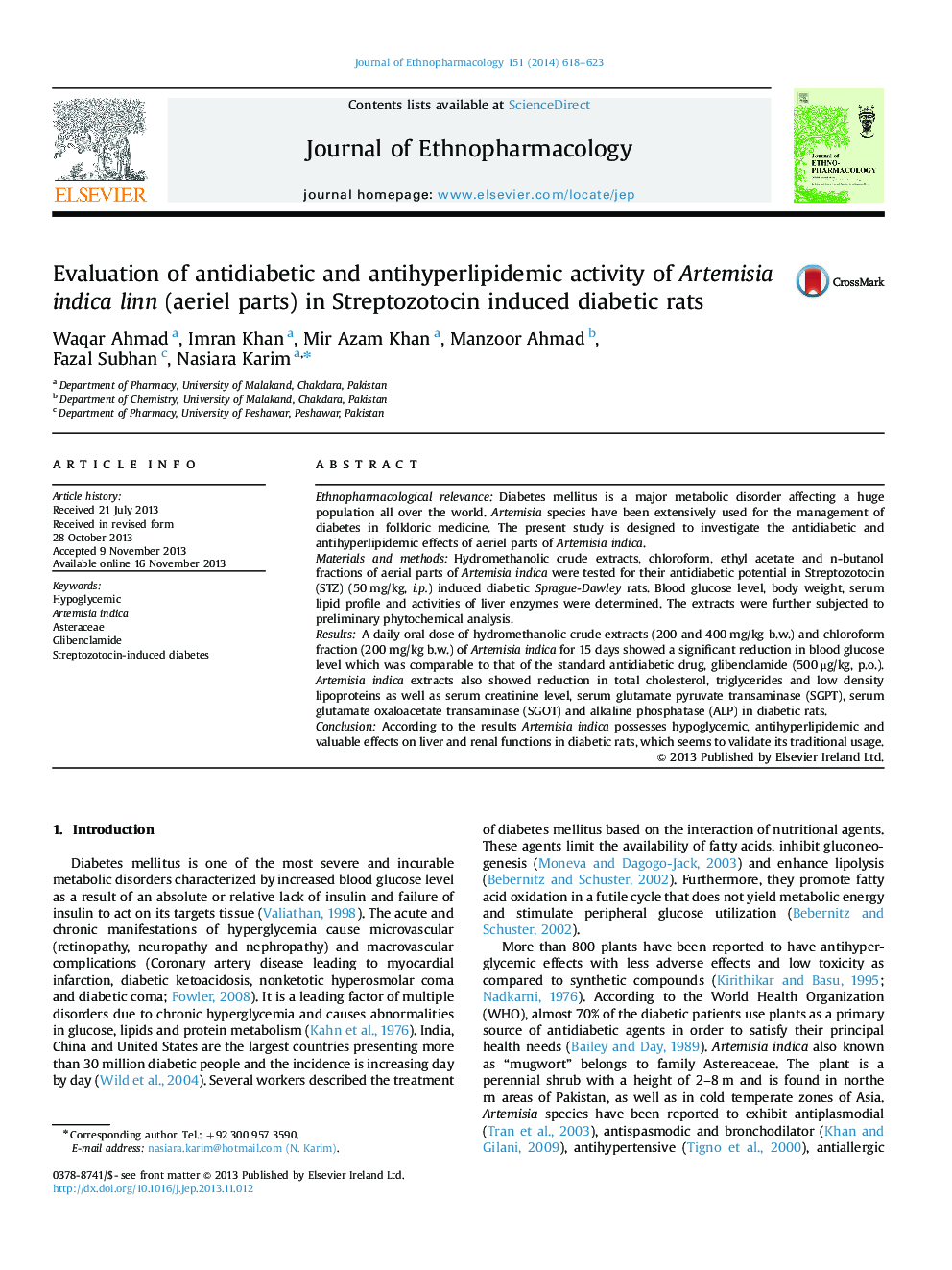| Article ID | Journal | Published Year | Pages | File Type |
|---|---|---|---|---|
| 5836875 | Journal of Ethnopharmacology | 2014 | 6 Pages |
Ethnopharmacological relevanceDiabetes mellitus is a major metabolic disorder affecting a huge population all over the world. Artemisia species have been extensively used for the management of diabetes in folkloric medicine. The present study is designed to investigate the antidiabetic and antihyperlipidemic effects of aeriel parts of Artemisia indica.Materials and methodsHydromethanolic crude extracts, chloroform, ethyl acetate and n-butanol fractions of aerial parts of Artemisia indica were tested for their antidiabetic potential in Streptozotocin (STZ) (50 mg/kg, i.p.) induced diabetic Sprague-Dawley rats. Blood glucose level, body weight, serum lipid profile and activities of liver enzymes were determined. The extracts were further subjected to preliminary phytochemical analysis.ResultsA daily oral dose of hydromethanolic crude extracts (200 and 400 mg/kg b.w.) and chloroform fraction (200 mg/kg b.w.) of Artemisia indica for 15 days showed a significant reduction in blood glucose level which was comparable to that of the standard antidiabetic drug, glibenclamide (500 μg/kg, p.o.). Artemisia indica extracts also showed reduction in total cholesterol, triglycerides and low density lipoproteins as well as serum creatinine level, serum glutamate pyruvate transaminase (SGPT), serum glutamate oxaloacetate transaminase (SGOT) and alkaline phosphatase (ALP) in diabetic rats.ConclusionAccording to the results Artemisia indica possesses hypoglycemic, antihyperlipidemic and valuable effects on liver and renal functions in diabetic rats, which seems to validate its traditional usage.
Graphical abstractDownload high-res image (115KB)Download full-size image
